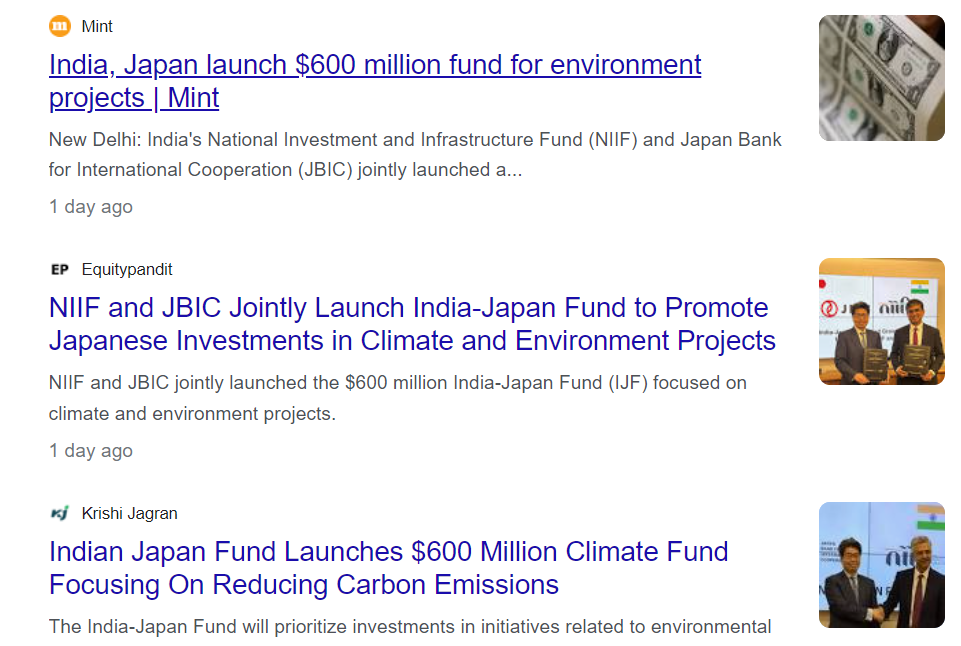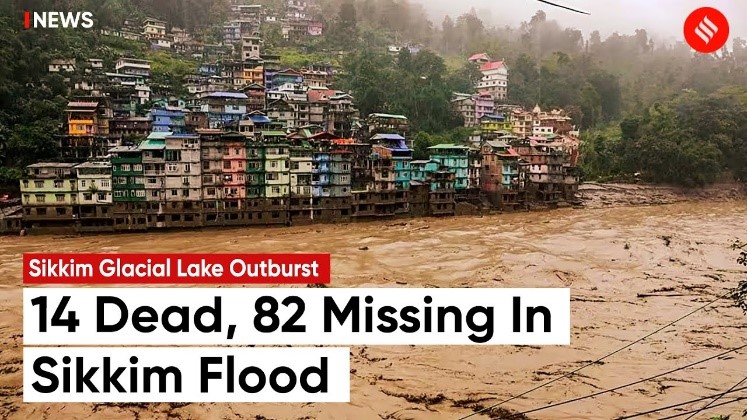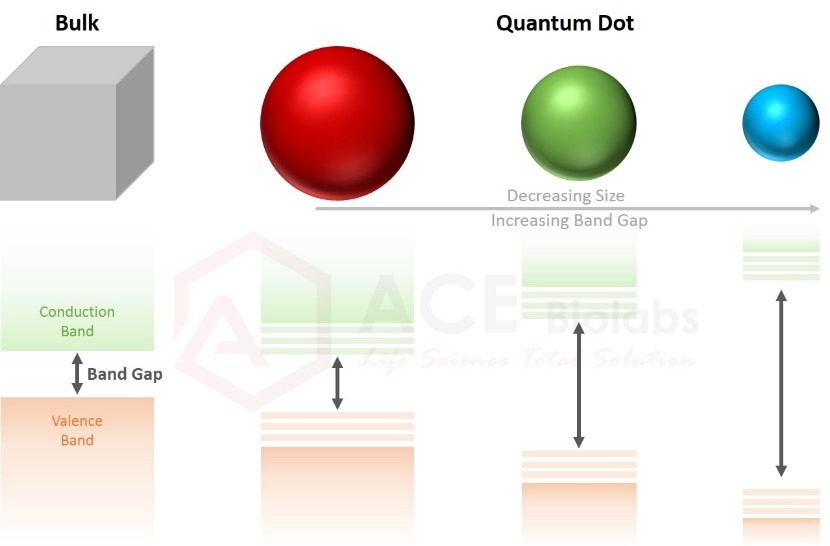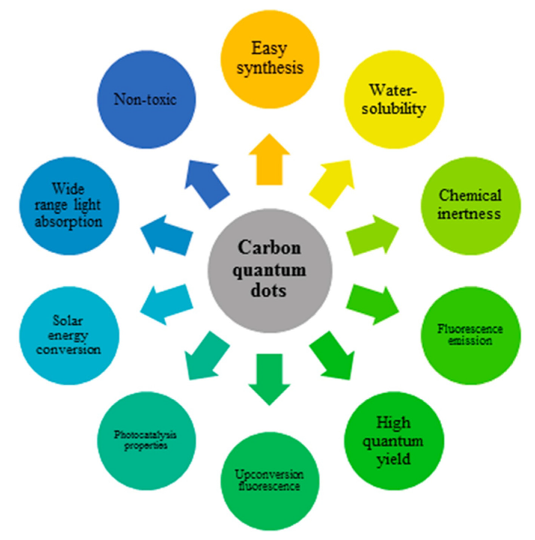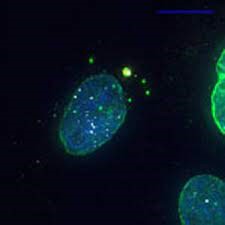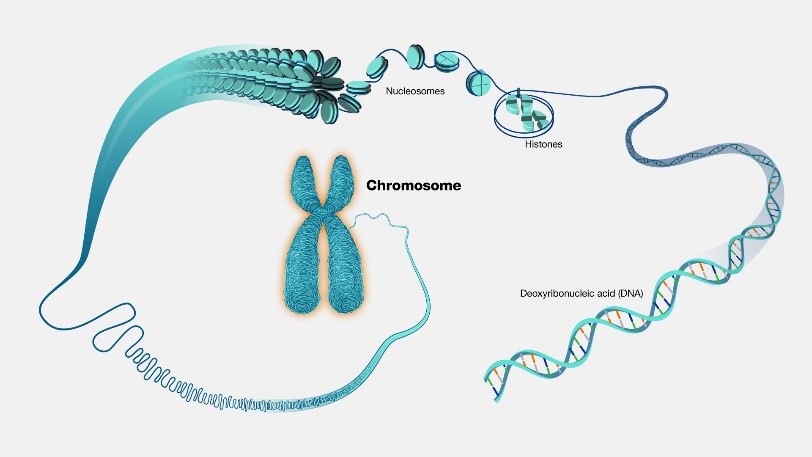- India Japan Fund for Climate & Environment related Projects.
- Glacial Lake Outburst Flood in Sikkim
- Chemistry Nobel for Quantum Dots discovery
- National Turmeric Board
- BlueWalker 3
- Uterus Transplant
- Central Universities (Amendment) Bill, 2023
- Exclusome
- CDSCO Report Uncovers Alarming Levels of Contaminants in Indian Cough Syrups
India Japan Fund for Climate & Environment related Projects
Context:
The National Investment and Infrastructure Fund (NIIF) of India, in collaboration with the Japan Bank for International Cooperation (JBIC), has jointly established a $600 million fund aimed at supporting climate and environmental projects.
India-Japan Fund
The Indian government will contribute 49% of the fund’s total capital, marking the NIIF’s inaugural bilateral fund, while JBIC will provide the remaining 51%, as stated by the finance ministry.
The primary objective of the India-Japan Fund is to invest in initiatives promoting environmental sustainability and low-carbon emission strategies, serving as a preferred partner for enhancing Japanese investments in India and fostering collaboration and innovation in this crucial sector.
Fund Management
The India-Japan fund will be managed by NIIF Limited, responsible for overseeing its strategic investments and initiatives.
JBIC IG, a subsidiary of JBIC, will work closely with NIIF Limited to promote Japanese investments in India, strengthening the partnership even further.
About NIIF
NIIF’s Background
Established in 2015, NIIF operates as a sovereign wealth fund, providing a platform for both international and Indian investors to participate in India’s growth story.
Ownership Structure
The government holds a 49% stake in NIIF, while the remaining 51% is owned by domestic institutional investors, sovereign wealth funds, international pension funds, and entities such as the US International Development Finance Corporation (USIDFC), as well as multilateral development banks including the Asian Infrastructure Investment Bank (AIIB), Asian Development Bank (ADB), and New Development Bank (NDB).
Glacial Lake Outburst Flood in Sikkim
In News:
On October 4th, a tragic incident unfolded in Sikkim, as relentless rainfall led to the South Lhonak Lake’s rupture, resulting in a devastating outcome. This catastrophe claimed the lives of fourteen individuals and left 102 people missing, including 23 Army personnel.
Context:
Situated amidst the Himalayas, Sikkim is grappling with the aftermath of a catastrophic Glacial Lake Outburst Flood (GLOF) triggered by continuous rainfall.
The South Lhonak Lake, located at an elevation of 17,000 feet in the northwest of the state, burst its confines, inundating four districts—Mangan, Gangtok, Pakyong, and Namchi.
Understanding Glacial Lakes:
- Glacial lakes are substantial bodies of water typically found near, on top of, or beneath glaciers.
- These lakes primarily form due to glacial processes, including the melting of ice and the accumulation of meltwater within depressions or basins formed by glacier movements.
Concept: Glacial Lake Outburst Floods (GLOF):
- A Glacial Lake Outburst Flood (GLOF) refers to the sudden and often catastrophic release of water from a glacial lake, usually caused by the breach or failure of natural dams that contain the lake.
- GLOFs commonly occur in glacier-rich regions, where meltwater accumulates within depressions or basins created by glacier movements.
- These events can have severe and far-reaching consequences for downstream communities and ecosystems.
Causes: Various Triggers for GLOFs:
GLOFs can be instigated by multiple factors, including:
- Melting Glaciers: Rapid glacier melting due to rising temperatures can increase the water volume in glacial lakes.
- Avalanches: Snow or ice avalanches can impact the lake, dislodging ice and debris into the water.
- Earthquakes: Seismic activity can destabilize natural dams or trigger avalanches.
- Rainfall: Heavy rainfall can contribute additional water to the lake and weaken natural dams.
- Volcanic Eruptions: Volcanic activity can lead to rapid glacier melting and the formation of glacial lakes.
Destruction and Impact:
GLOFs bring about several adverse consequences, including:
- Flooding: Rapid and extensive flooding in downstream areas with a quick rise in water levels.
- Infrastructure Damage: GLOFs can harm or destroy roads, bridges, buildings, and farmland.
- Loss of Life: GLOFs often result in human casualties and harm to livestock and wildlife.
- Environmental Harm: Floodwaters and debris severely affect natural environments, such as forests, wetlands, and river ecosystems.
Notable GLOF Incidents:
- Historically, GLOF events have led to significant loss of life and infrastructure damage.
- The tragic 2013 flash floods in Uttarakhand’s Kedarnath stand as a stark reminder of the devastating consequences of GLOFs, exacerbated by a GLOF event originating from the Chorabari Tal glacial lake, resulting in the loss of thousands of lives.
The Vulnerability of South Lhonak Lake:
- Glacial Melting: Rising global temperatures accelerate glacier melting in the Sikkim Himalayas, including the glacier feeding South Lhonak Lake, increasing its water volume and vulnerability to GLOFs.
- Glacial Lake Expansion: South Lhonak Lake’s size has significantly increased over the past five decades, primarily due to glacier retreat and melt, heightening its vulnerability.
- Seismic Activity: The region surrounding South Lhonak Lake is prone to seismic activity, which can destabilize natural dams or trigger avalanches, potentially leading to GLOF events. Past earthquakes in the area further increase this risk.
Government Initiatives:
- To mitigate the risk associated with South Lhonak Lake, the Sikkim government, in collaboration with various agencies, including the Sikkim State Disaster Management Authority and Sikkim’s Department of Science and Technology and Climate Change, took proactive measures in 2016.
- They decided to syphon off water from the lake using an innovative approach. Under the guidance of innovator Sonam Wangchuk, authorities installed three eight-inch-wide and 130-140-meter-long High-Density Polyethylene (HDPE) pipes to extract water from the lake.
- This initiative successfully extracted 150 liters of water per second, reducing the lake’s water level and mitigating the risk of a potential GLOF.
The Path Forward: Warning and Mitigation:
- Lake Monitoring: Regular monitoring of glacial lakes to assess changes in water levels and natural dam stability.
- Early Warning Systems: Implementing systems to detect and warn downstream communities of potential GLOFs.
- Infrastructure Development: Constructing protective infrastructure such as dams or diversion channels to manage floodwaters.
- Land-Use Planning: Implementing land-use planning and zoning to restrict construction in high-risk areas.
Conclusion:
The recent calamity in Sikkim underscores the imminent threat of GLOFs in the Himalayan region.
While government initiatives are commendable, continued monitoring, research, and disaster preparedness are vital to safeguarding vulnerable communities in the face of expanding glacial lakes and the looming specter of GLOFs.
Chemistry Nobel for Quantum Dots discovery
Context:
The 2023 Nobel Prize in Chemistry has been awarded to Moungi G. Bawendi, Louis E. Brus, and Alexei I. Ekimov in recognition of their groundbreaking work on the discovery and synthesis of quantum dots.
About the Nobel Laureates
Alexei Ekimov: Born in 1945 in the former USSR, Ekimov earned his PhD in 1974 from Ioffe Physical-Technical Institute. He formerly served as the Chief Scientist at Nanocrystals Technology Inc. in New York, USA.
Louis Brus: Born in 1943 in Cleveland, USA, Brus obtained his PhD in 1969 from Columbia University, where he currently holds a professorship.
Moungi Bawendi: Born in 1961 in Paris and raised in France, Tunisia, and the US, Bawendi earned his PhD in 1988 from the University of Chicago. He currently serves as a professor at the Massachusetts Institute of Technology (MIT) in the USA.
What are Quantum Dots?
- Quantum dots (QDs) are artificially created nanoscale crystals renowned for their distinctive optical and electronic characteristics.
- They exhibit the ability to transport electrons and emit various colors when exposed to UV light.
- The origin of these synthetic semiconductor nanoparticles can be traced back to theoretical concepts from the 1970s, culminating in successful synthesis in the early 1980s.
Notably, the optical properties of small semiconductor particles are influenced by quantum effects, which are size-dependent.
Working Principle
Size Matters: Quantum dots control light emission by manipulating particle size, as energy levels correspond to wavelength (color). This allows them to emit or absorb specific colors of light.
Versatile Structures: Quantum dots exist in diverse forms, with their properties determined by factors such as size, shape, composition, and structure. They find applications as active materials in single-electron transistors and offer extensive potential across various fields.
Contributions of Ekimov, Brus, and Bawendi
- Ekimov’s Soviet Discovery: Ekimov’s groundbreaking discoveries in this realm date back to 1981, although they remained relatively obscure due to the restrictions of the Iron Curtain.
- Glass Coloration Mystery: Ekimov initiated his work by investigating the intriguing phenomenon of glass coloration. His research focused on how particle size influenced the color imparted to glass during its formation, ultimately leading to the revelation of size-dependent quantum effects.
- Brus’s Independent Revelation: Unbeknownst to Ekimov’s work, Brus in the United States was conducting experiments with cadmium sulfide particles for solar energy applications. He observed that smaller particles exhibited light absorption at different wavelengths, thereby demonstrating the size-dependent quantum effect.
- Bawendi’s Innovations: Bawendi contributed to the field by enhancing particle synthesis methods, leading to the production of more refined nanocrystals. This advancement enabled a broader exploration of the unique properties of quantum dots by chemists worldwide.
- In Electronics: Quantum dots play a pivotal role in QLED technology, which is utilized in computer and television screens. They also contribute to the adjustment of light in LED lamps, offering a range of color temperatures.
Biochemistry and Medicine: Quantum dots find applications in biochemistry for cell and organ mapping, and medical professionals are exploring their potential for tracking tumor tissue within the human body. Additionally, chemists harness their catalytic properties to drive various chemical reactions.
National Turmeric Board
Context:
The Indian government has recently introduced the National Turmeric Board, with a primary focus on advancing the turmeric industry and its associated products within the nation.
This board is set to play several key roles:
- Leadership and Coordination: The board will take on a leadership role in matters related to turmeric, fostering better coordination with agencies like the Spices Board, and aiding in sector development.
- Promoting Health Benefits: Leveraging the global interest in the health benefits of turmeric to raise awareness, consumption, and expand international market reach.
- Research and Development: Encouraging research and development for innovative turmeric products while harnessing traditional knowledge to create value-added items.
- Capacity Building: Concentrating on enhancing the capabilities and skills of turmeric growers to increase value addition.
- Quality and Food Safety: Ensuring the promotion of quality and food safety standards for all turmeric products.
- Global Potential: Safeguarding and fully harnessing the potential of turmeric for the benefit of humanity.
Benefits:
- Grower Prosperity: By dedicating attention to the sector and adding value, the income of turmeric growers is set to improve.
- Global Leadership: Through research, market development, and value addition initiatives, India’s status as a leading exporter of high-quality turmeric will be upheld.
The composition of the board includes:
- Chairperson: Appointed by the Central Government.
- Members: Representatives from various government departments, research institutions, turmeric farmers, and exporters.
- Secretary: Appointed by the Department of Commerce.
Regarding turmeric production in India in the year 2022-23:
- India stands as the largest producer, consumer, and exporter of turmeric worldwide.
- Over 75% of the world’s turmeric production originates from India.
- It is cultivated in more than 20 Indian states, with Maharashtra, Telangana, Karnataka, and Tamil Nadu being the largest producing states.
In terms of turmeric exports:
- India commands a majority share of over 62% in the global turmeric trade.
- In 2022-23, India exported 1.534 lakh tonnes of turmeric and its products, with a total value of $207.45 million USD, through more than 380 exporters.
- Key export markets include Bangladesh, UAE, USA, and Malaysia.
- The Board’s focused efforts are anticipated to boost turmeric exports to $1 billion USD by 2030.
Notable properties of turmeric include:
- It is a perennial herbaceous plant belonging to the ginger family.
- Turmeric rhizomes have a rich history of use as a spice, dye, medicine, and religious symbol.
- The vibrant color of turmeric is primarily attributed to curcumin, a bright yellow phenolic compound.
- Curcumin has gained recognition for its potential cancer-fighting properties, driving demand for high-curcumin turmeric.
- Turmeric thrives in regions with temperatures between 20 and 30 °C (68 and 86 °F) and requires sufficient annual rainfall for optimal growth.
- Turmeric cultivation occupies approximately 6% of India’s total area dedicated to spices and condiments.
Telangana holds the top position as the largest turmeric-producing state in India, followed by Maharashtra and Tamil Nadu as the second and third-ranking states, respectively.
BlueWalker 3
What is BlueWalker 3?
BlueWalker 3 represents a prototype satellite crafted for an upcoming satellite constellation spearheaded by AST SpaceMobile.
Objective: This constellation seeks to deliver global mobile and broadband services.
Astronomical Impact: The observation of BlueWalker 3 has highlighted its substantial influence on astronomy, as it emerges as one of the most luminous objects in the night sky, potentially surpassing even celestial stars.
Concerns Voiced: Astronomers and scholars have expressed apprehensions regarding satellite constellations like BlueWalker 3, owing to their proximity to Earth and substantial dimensions, which escalate the potential for disrupting astronomical observations.
Global Data Gathering: Information regarding BlueWalker 3’s luminosity and path has been amassed from diverse locations around the world, including Chile, the United States, Mexico, and New Zealand.
Uterus Transplant
Context:
- The first uterus transplant in the UK was performed at the Churchill Hospital Oxford, involving the transfer of a uterus from a 40-year-old woman to her 34-year-old sister, who faced reproductive challenges due to a rare medical condition.
- The success of the transplant will be determined by the occurrence of a live birth in the future.
Understanding Uterus Transplants
Unlike life-saving procedures such as heart or liver transplants, uterus transplants significantly enhance the quality of life, particularly for women facing uterine factor infertility, allowing them to pursue their reproductive dreams.
Pioneering Success in Sweden
- In 2014, Sweden achieved a historic milestone with the first live birth following a uterus transplant, opening new possibilities for addressing uterine factor infertility.
- Efforts are underway to make uterus transplants more accessible, especially in countries like the UK, where the National Health Service estimates a cost of GBP 25,000 (Rs 25.26 lakh).
Uterus Transplants in India
- India celebrated its first uterine transplant baby’s birth on October 18, 2018, joining the ranks of countries with successful uterus transplants like Turkey, Sweden, and the United States.
- The cost of uterine transplant surgery in India currently ranges from Rs 15-17 lakh, making it a more affordable option for many.
Step-by-Step Procedure
- Recipient evaluation, donor assessment, in vitro fertilization (IVF), harvesting, and transplantation are key steps in the uterus transplant process.
- IVF is necessary to create embryos since the transplanted uterus isn’t connected to the fallopian tubes.
- The success of the transplant is evaluated over several stages, with conception attempted only after a specified period.
Issues with Uterus Transplants
- Pregnancy following a uterine transplant comes with increased risks, including rejection, spontaneous abortion, intrauterine complications, low birth weight, and premature birth.
- Immunosuppressant drugs are required to prevent rejection, but they can have side effects. Recipients should undergo long-term follow-ups to monitor the effects of these drugs.
Exploring Artificial Uteri
- The success of uterus transplants has led to research on artificial uteri grown from stem cells on 3D scaffolds.
- These bioengineered organs could eliminate the need for live donors but require further development before becoming efficient and safe for human use.
- Considerations for inclusivity, including hormone-related concerns for trans-women recipients, need to be addressed.
Conclusion
Uterus transplants offer hope and possibilities for individuals facing uterine factor infertility. Ongoing research and technological progress continue to advance the field of reproductive medicine, despite the challenges that persist.
Exclusome
Introduction:
- The exclusome, a recently discovered organelle in mammalian cells, stands out for its unique characteristics.
- Unlike eukaryotic cells that typically store their DNA in the cell nucleus, organized into chromosomes, the exclusome houses DNA in the form of plasmids—small circular DNA strands capable of independent replication, typically associated with bacteria and other microscopic organisms.
- Interestingly, some of the plasmids within the exclusome originate externally, while others, known as telomeric rings, derive from the capped ends of chromosomes, the telomeres.
- In specific instances, such as certain cancer cells, telomeric rings are regularly pinched off and amalgamated to form rings.
- The cell nucleus distinguishes between its own essential DNA and extraneous or presumably dispensable DNA, depositing the latter, along with externally acquired plasmids, in the cell plasma.
- This discovery underscores the cell’s capacity to differentiate between essential and non-essential DNA, suggesting a potential protective function for the exclusome in safeguarding the cell’s genetic integrity.
What is an Organelle?
Organelles are specialized, small structures within cells that perform specific functions, akin to organs in a body. Notable cell organelles include nuclei, responsible for storing genetic information; mitochondria, which generate chemical energy; and ribosomes, dedicated to protein assembly.
What is a Chromosome?
Chromosomes are elongated, thread-like structures situated in the nuclei of eukaryotic cells, spanning animal, plant, and fungal cells. Comprising tightly coiled DNA around supporting proteins called histones, chromosomes play a pivotal role in ensuring the accurate replication and distribution of DNA during cell division. They serve as essential carriers of hereditary traits across generations.

